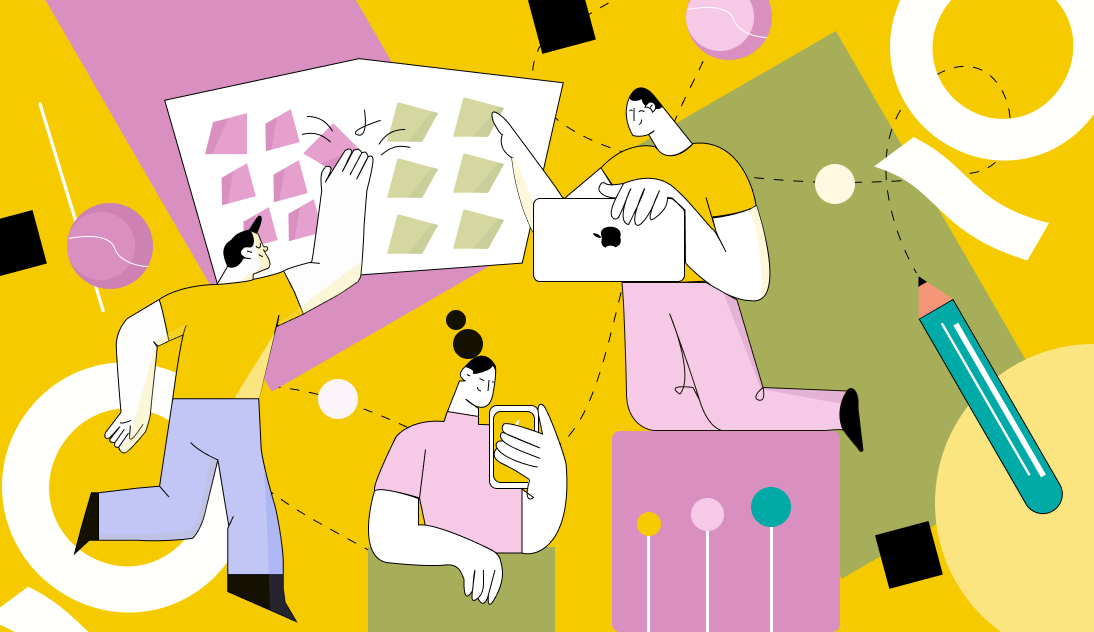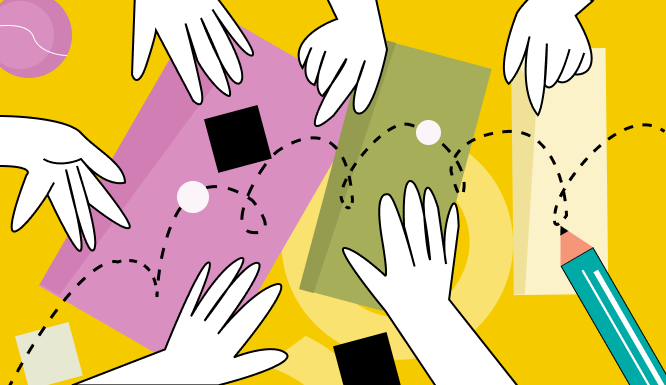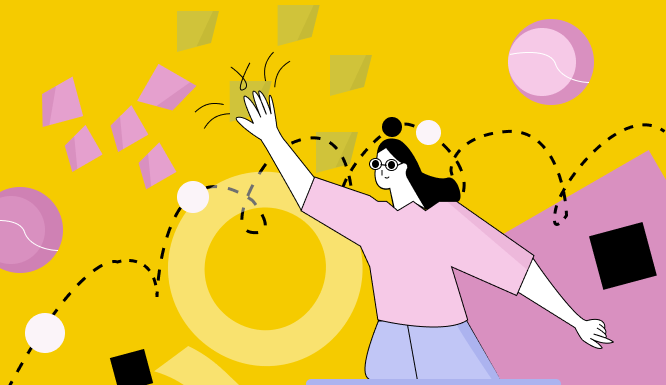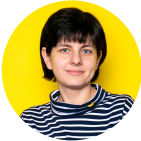What Is The First Step In Marketing Channel Design?
Product design process: 10 steps

Content
- What is Product Design?
- Product Design Elements
- Requirements for Product Design
- Objectives of Product Design
- What is the Process of Product Design?
- Ten Steps of the Product Design Process
- Brainstorming
- Defining the Product
- Conducting the User Research
- Sketching
- Prototyping
- Compiling Specifications
- Producing the Factory Samples
- Sample Testing
- Starting the Production/Development
- Providing Quality Assurance
- How to Evaluate Product Design?
- Changing/Modifying Your Product Design
- Mistakes to Avoid
- How to Improve Your Design Process
- Finding the Design Solution
- Qubstudio Product Design
- Case Study
- Conclusion
Have you ever wondered, which principles do people abide when choosing a particular product? Seven out of ten buyers agree that the product's appearance often affects their choice. Thus, we can conclude that the visual component is one of the defining parameters of its competitiveness. The thoughtful, attractive design is especially necessary for such a highly competitive environment as a software market. So, what is the product design and what does it assume?
What is Product Design?
Today, finding an unoccupied business niche is close to impossible. For this reason, even fairly uncomplicated goods are created by teams of specialists with different fields of competence. In the case of such complex product as application, the process of product design may involve dozens of professionals – graphic designers, UX designers, animators, marketing specialists, business analysts, user behavior researchers, etc. It is a complex multi-step process at the junction of engineering, management, and graphics. Product design provides a comprehensive understanding of what the final product would look like, feel like, what tasks and with what tools it will solve.
Product Design Elements
Formally, product design can be divided into three fundamental components:
- Appearance;
- Functionality;
- Quality.
Of course, to create a successful, competitive product, you will need to carefully work out all these three points: an attractive, modern appearance; a convenient functionality that allows users to cope with their pain points (or achieve certain goals); maximum availability, high performance, and security.
Requirements for Product Design
As for the requirements for product design, it all depends on the chosen target audience. There are two options: the first is when the product is designed for the widest possible audience, and it is almost impossible to determine who exactly will use it. For this reason, the requirements are rather "blurry". For example, the product must be compatible with the latest versions of popular operating systems, be compact, work quickly, solve user pain points (an obvious requirement), etc.
The second option implies the existence of clear customer requirements for product design (as a rule, they are presented in the form of requirements specification). Usually, the development company needs to submit several wireframes of the possible design that would correspond to all requirements, in order for the customer to choose the option they like most.
Objectives of Product Design
Now, let's discuss the goals that (in theory) should be pursued by the team developing the product design.
Without underestimation, we can say that design determines the value (in the context of solving some problems or achieving some goals), functionality and usefulness of the product itself. In turn, from the point of view of the manufacturer, the product should be manufactured as quickly, cheaply, and accurately as possible. As practice shows, providing a balanced compromise between the goals of consumers and the manufacturer is not so easy, especially when it comes to a startup.
What is the Process of Product Design?
In general, there are 5 main product design phases:
- Discussing plans for launching a new product within the team, brainstorming;
- Defining pain points (desires) of the consumer and solutions for their elimination (achievement);
- Developing strict product requirements (documenting technical specifications);
- Splitting the product implementation process into iterations;
- Testing and modifying the created solution on the basis of real usage and target user experience.
Ten Steps of the Product Design Process
In order to consistently implement all the above five phases, we have developed a universal list of steps of the product design process and outlined them below. The steps in the product design process include:

1. Brainstorming
The first step to design a product is brainstorming, which appeared in 1953 in the United States. As a rule, two groups are created for its implementation. The first group includes people who generate ideas to solve the problem. The second group consists of a "commission" that deals with the processing of the proposed ideas.
Brainstorming consists of three phases:
- Definition of the problem. In particular, you must announce the problem (in this case, the need to create the "right" product design) and select participants for both teams.
- Idea generation. This stage involves the most creative approach. Participants of the brainstorming voice every idea they can imagine, however crazy it may sound. Here, quantity is important, not quality. Therefore it is necessary to be guided by the following rules:
- generate as many ideas as possible, without any limitations;
- even the most absurd and non-standard ideas should be considered;
- ideas can and should be combined and improved;
- no criticism is allowed – at this stage, ideas should not be evaluated in any way.
- Selection of the most viable ideas among proposed. In this step, appreciation and criticism are welcome. This stage is usually conducted by the second team
2. Defining the Product
After brainstorming, when all the viable ideas for the future product are chosen, you need to highlight a certain number of general expectations (requirements) for its implementation. As a rule, the output is a fairly abstract list, the task of which is not to form an exact guideline on the development, but rather to determine the directions for the further team activities.
3. Conducting the User Research
Research implies several aspects: market research to define the presence of competitors, the definition of trends, the assessment of the product's prospective longevity, etc. As a rule, this task is solved by marketers and business analysts. The results of this research provide grounds to build so-called customer portraits. In turn, these portraits would give your team a better understanding of what the final product should be. A properly-composed portrait includes such parameters as gender, age, marital status, income level, place of residence (geography), employment, job position, typical problems, needs, fears, and desires, and so on.
In no case should you neglect this step in the hope of creating a universal product "for everyone". With a high probability, you simply will not please anyone and drain your entire budget "into the pipe".
4. Sketching
Any large project with a significant budget will only benefit from the creation of sketches. Before time is invested in finding solutions, the direction of the search must be coordinated with the client. Sketches allow to somewhat narrow down this very direction when choosing the main concept, and only then work with composition, layouts, edits, refinement of the concept, etc., would follow.
5. Prototyping
Creating a prototype is no less important and crucial task than developing a design itself. Note that the obtained result is not a beautiful final appearance, but rather a "skeleton" of the future product's look. Nevertheless, it allows demonstrating the functionality, ways of user interaction with the product and its basic appearance. The creation of the prototype allows to avoid many errors and corrections in the future. This will help save time, money and nerves, both of the customer and performers.
6. Compiling Specifications
Creation of a list of specifications is, in fact, the process of the above-mentioned requirement specification's elaboration. It allows reviewing all the requirements for the finished product and possible solutions in maximum detail. Also, these specifications should contain the final delimitation of responsibilities, deadlines, and costs. These documents would be essential at the product development stage.
7. Producing the Factory Samples
Manufacturing the pre-production samples will help you understand whether the core idea of the product would be viable and attractive to the real users or if, perhaps, it's worth to shift the activity vector to other key points. In the case of a physical product, it also allows understanding how much the varying manufacture departments/manufacturing contractor are ready to produce the developed goods with required speed and quality.
In the case of software, such samples are called MVP – a kind of wireframe application that contains the most essential functionality.
8. Sample Testing
Testing samples allows you to timely identify the flaws of the product or inconsistencies with the requirements. That is before you even begin an expensive (as a rule) procedure of its implementation. Manufacturing and testing the samples can be iterated as much as needed until they correspond to all the requirements and gain enough of the positive feedback from customers.
9. Starting the Production/Development
At the time of starting the manufacturing/developing the product, you will already have a full set of technical specifications with clearly defined requirements, tasks, responsibilities, deadlines, and budget. Your goal is to break the major tasks into smaller subtasks (so that the deadline for their implementation does not exceed several weeks) and assign priorities. In the software industry today, Agile methodologies are employed for this, such as Scrum or Kanban.
10. Providing Quality Assurance
In fact, quality assurance activities cover all stages of product development, including release and further maintenance. Nevertheless, their main responsibilities lay in ensuring the quality of the finished product. In case of app development, QA team is responsible for pre-release testing conducted to ensure the quality of the released solution, its accordance with the requirements specification, and the expectations of the target audience (they are determined at the stage of forming the customer portraits).
How to Evaluate Product Design?
To obtain an objective assessment of the resulting product design, we recommend using a SWOT analysis. It implies answers to questions in four directions, in particular:

- What are the advantages of your product? (how valuable the implemented functions are for the target audience, how easily can this value be conveyed to consumers, which of users' problems does it solve, with what indicators would you measure the success of your idea, how strictly were the deadlines upheld, etc.).
- What are the disadvantages of your product? (is there ways to somehow improve your idea, what your team lacks for its implementation, what can serve as an obstacle for its successful promotion to the target audience, what are the disadvantages of your idea from the point of view of the target audience, etc.).
- What are the possibilities for the promotion of your product? (how easy it will be to promote it on the market, what are its competitive advantages, what promotion channels would be the most viable, how successful will it be in the long term, etc.).
- What are the possible threats to the successful promotion of your product? (would the disadvantages of the product create notable risks for its promotion, what financial problems you may encounter, are there any competing products that cannot be outperformed easily, etc.).
Changing/Modifying Your Product Design
In order to develop product design, you need to follow the above-described product design steps. But as for the alteration of the finished design, you will need to add two important phases beforehand.
The first step is understanding what you want and can achieve with the help of the changed design. For example, if we are talking about a website, you need to review metrics attributed to its popularity: traffic, conversion, user retention, etc. Thus, for a start, you will need to analyze the indicators of the current version of the site and only then draw conclusions about the need for modifications. You can also use the A/B testing to check the required scale of modifications. You can change some things in the existing design, measure the user reaction, and check if it might be as or even more effective than developing a new one.
The second step is to conduct end-to-end competitive analysis. It is very important to evaluate not only the competing products themselves but also their budgets (it may be so that the budget of altering the product design to overcome some competitors would significantly exceed the expected earnings). After that, you can borrow those elements that have proven their attractiveness for target audiences similar to yours.
Mistakes to Avoid
And now let us discuss typical mistakes people make when they are facing the problem of how to design a new product :
- Compromising between aesthetics and functionality. Ideal product design is one that combines useful functions and positive aesthetics. If, at the planning stage, you understand that by paying tribute to design trends, you risk making the product unnecessarily difficult/underperforming/too expensive for the target audience, elect to use the proven solutions.
- Breaking the deadlines. When setting the deadlines, try to take into account all the possible delays and force majeure situations, which would entail breaking the timeframes. Otherwise, you put yourself at risk of delivering a "raw" project with an unfinished design.
- Operating upon inaccurate project documentation. Working on the basis of insufficiently scrupulous technical specifications, performers often create products that do not meet customer expectations. Keep in mind the saying: "It's better to ask again a hundred times than to redo a hundred times".
- Infringing on intellectual property. This concerns mainly the visual component of your product. Carefully ensure that your design team does not accidentally (or intentionally) borrows the easily discernible ideas from another projects. Not only does it bear a threat of complete fail of your project on the market, but also costly litigation.
- Lacking ideas for future marketing efforts. Before going through all the stages in product design process, you need to have a definite idea of what channels and tools you are going to use to promote it to the public (usually, this is the responsibility of marketers, with whom you need to discuss this point in advance). This will help you to come to a timely understanding of the ways of demonstrating the product's benefits to the customers.
- Failing to follow today's trends and innovations in your business niche. It is probably difficult to find a consumer who would not want to get the most modern, most innovative product. Therefore, the neglect of market trends in the future can turn into a complete failure of the product when it is presented to the target audience. The main thing is that this tacit requirement does not contradict the first point of the current list.
- Reluctance to turn to outside experts. And, finally, the most common mistake: hoping to save money, the teams often try to do with existing specialists by expanding their expertise and responsibilities even if they had not previously had any experience. This is fundamentally wrong. In 9 out of 10 cases, it is better to pay more but turn to contractors who can boast of impressive expertise in the field of activity you need, rather than forcing your team members to study in "field conditions".
How to Improve Your Design Process
And now – some simple recommendations for improving the new digital product design process :
- Study your customers thoroughly. In order to determine the direction for the future design of the product as accurately as possible, carefully study those for whom it is intended (do not neglect the user research step, in particular, compiling the customer portraits). Think like your customer, behave in the same way. This will bring you an accurate awareness of the correctness or incorrectness of your projections.
- Do not be afraid of problems. On the contrary, make it a kind of challenge for your team to discover and solve them. If you constantly postpone problems or miss them completely, solving only the tasks you are good at, you will most likely have to redo the result. The best way to cope with this is to do the most difficult things from the very beginning when your team is the most motivated and enthusiastic.
- Plan your budget to the maximum. Never underestimate the possible expenses – as a rule, they turn out to be higher than planned. Otherwise, you risk to finish only some parts of the project and leave the rest "until better times" when there will be money (and when, perhaps, your product will no longer be relevant).
Finding the Design Solution
If you want to get a really cool, modern and unique design – then contact only the professionals. Otherwise, even if your idea seems seemingly cool and visually attractive in theory, from a practical point of view, it risks not meeting the expectations of the target audience (that is, you spend a lot of time and money on a non-viable product).
Qubstudio Product Design
For more than ten years, Qubstudio has been creating uncommon design solutions for our clients that attract and catch the attention at first sight. To do this, we conduct exhaustive studies of each individual product's market niche and prospective target audience. We develop creative designs, rather than identical conveyor solutions.
You can review the portfolio of finished projects at our website.
Case Study
To speak not with words, but with our work results, consider these cases:
Ademrius
The goal was to create a complex medical records system, telemedicine portal, and fast booking tool. For patients, we designed a smooth process with reminders, predictions, and intelligent suggestions.
Vapulus
A product design team of two senior designers, a business analyst, brand strategist, and copywriter created a huge e-commerce solution for the Egyptian market. As a result, our client got appealing branding, a user-friendly app for customers, and a powerful merchant portal.
TIM
Together with Tim, we designed convenient c2c mobile apps for finding routine helpers and managing their work. We collaborated on user research, information architecture, and usability testing.
Go TO-U
We partnered with EV chargers network "Go TO-U" to redesign a mobile app and design a back office portal. Ukrainian Design Awards recognized mobile app design as The Best Of 2018.
Aurora
Investment instrument in your pocket. To achieve the desired result, our team created a product roadmap, built user flows, information architecture, and designed a mobile app for regular investors.
Conclusion
Let's sum up. As we can see, to design a new product is a rather complicated, multi-step process that requires the participation of diversified specialists. That is why, if you intend to take one of the leading positions on the market even in the conditions of tough competition, you definitely cannot do without the help of real professionals. Contact us today and we will offer you the most favorable conditions for cooperation!

Yaryna, Business Analyst
What Is The First Step In Marketing Channel Design?
Source: https://qubstudio.com/blog/ten-steps-of-the-product-design-process/
Posted by: stampernernat.blogspot.com

0 Response to "What Is The First Step In Marketing Channel Design?"
Post a Comment